Beverly Gray's Blog: Beverly in Movieland, page 116
October 17, 2014
Interacting with Neil Patrick Harris, 2015 Oscar Host
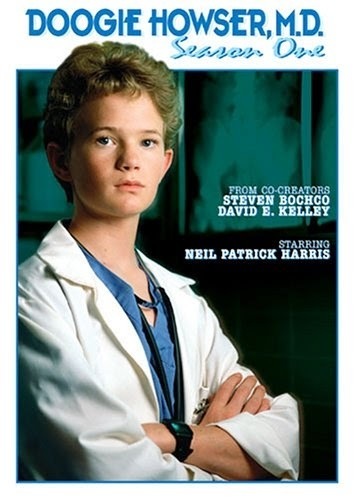
In the midst of a serious Ebola scare and so many other national disasters, it’s great to be able to trumpet a bit of good news: Neil Patrick Harris is going to host the Oscars. I doubt I have to explain who NPH is. Albuquerque’s favorite son first made headlines as a teenager in the goofy title role of Doogie Howser. M.D., a popular TV series (1989-1993) about a fourteen-year-old med school graduate.
He also made films. I was surprised to recall that one of his very first was the leading kid role in an amiable fantasy called Purple People Eater, written and directed by a Roger Corman friend of mine, Linda Shayne. Many of his later films have been lightweight too, like Starship Troopers and (playing a parody version of himself) Harold & Kumar Go to White Castle. And of course there’s recently been his Emmy-nominated sitcom role as playboy Barney Stinson in How I Met Your Mother. Yet his appearance in Gone Girl proves he can go dramatic as well.
But he’s made perhaps his biggest impression in a series of Broadway musicals. (He can sing, dance, do magic tricks, and probably walk on water.) He’s starred in everything from Sondheim to Rent to the Tony-winning transvestite role in the rock musical, Hedwig and the Angry Inch. It must be said, he has great legs. What’s really going to prepare him to serve as Oscar host, though, are the years he’s spent brilliantly hosting the Tonys, by far the most entertaining of the big awards shows.
One of the things that most intrigues me about Harris, aside from his versatility, is the fact that he’s the ultimate social media creature. He has 10.7 million Twitter followers, to whom he sends out almost daily tweets, like this one: “Yesterday I celebrated the birth of my twins. Tomorrow I celebrate the birth of my book. I hope the book poops less.”
Yes, he’s got a new memoir out. In a typically puckish twist, NPH pays homage to the Choose Your Own Adventure books kids used to love. Here’s part of the official blurb: “Sick of deeply personal accounts written in the first person? Seeking an exciting, interactive read that puts the ‘u’ back in ‘aUtobiography’? Then look no further than Neil Patrick Harris: Choose Your Own Autobiography! In this revolutionary, Joycean experiment in light celebrity narrative, actor/personality/carbon-based-life-form Neil Patrick Harris lets you, the reader, live his life.”
Sounds like fun. See his official book trailer below. For those not involved with today’s publishing world, it might not be known that video book trailers are now considered de rigueur, but Harris’s is surely more entertaining than most. And of course it smartly capitalizes on the current fad for all things interactive. Even the stuffy old Academy of Arts and Sciences, the organization that stages the Oscar broadcast each year, has finally recognized that fans want to get involved on an active level. The Academy just completed a redesign of its www.oscars.org site, so that movie buffs (and not just visitors to the Academy’s Margaret Herrick Library) can view priceless photographs and film clips. Now anyone with Internet access can see Audrey Hepburn’s screen tests for Roman Holiday and the theatrical trailer for William Castle’s Homicidal, which offers a “fright break” (with full refund of the ticket price) for those too scared to continue watching.
I doubt I’ll need a fright break when watching NPH strut his stuff at the Oscars. True, the Oscar hosting job has scared some of the biggest names in the business. But not NPH, surely.
Published on October 17, 2014 10:03
October 14, 2014
Geoffrey Holder: Un-Ordinary, Unforgettable
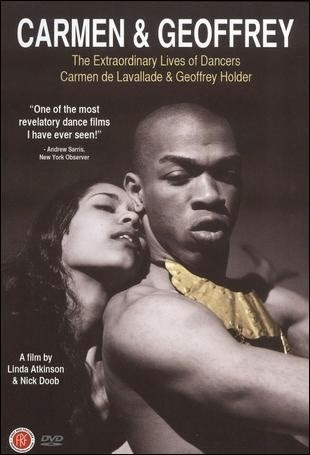
Geoffrey Holder, at age 84, has left the building. I wonder how many movie fans are saddened by that news. Holder is perhaps not a household name, despite his memorable appearances as the eerie Baron Samedi in To Live and Let Die and as the amiable Punjab in Annie. Ironically, he was best known for a series of commercials for 7-Up, in which, clad in a gleaming white suit, he sang the praises of “the Uncola.”
Even if you didn’t know the name, Geoffrey Holder made an impression. Measuring down from the top of his bald heat, he was six foot six, with a dancer’s grace and an exuberance all his own. His voice was basso profundo, his Caribbean inflection was lilting, and he spoke in superlatives: the world for him was “lovely,” “mahvelous.” And his clothes . . . suffice it to say that one of his many talents was for costume design.
I’ve been following Geoffrey Holder’s career for many years, ever since my beloved first dance teacher, the beautiful Carmen De Lavallade, brought him down the aisle of the Lester Horton Dance Theater and introduced him as the man she was going to marry. If memory serves, all of us little girls at Dance Theater were invited to the wedding, even though it was quite clear that we were not about to travel from L.A. to the fabulous estate in Connecticut where the outdoor nuptials were held. But we saw the photo spread (I think it was in Ebony, or Jet), and it looked to be a splendid calypso-flavored bash.
Carmen had met Geoffrey on Broadway, when both appeared in a Harold Arlen/Truman Capote musical fable called House of Flowers. Playing the God of Life and Death, Geoffrey designed his own costume: a burnt-orange cape and a loin cloth. He intuitively knew how effective this get-up would be: “Being a dancer you stand with a straight spine. You look 12 feet tall.” In later years, Geoffrey returned to Broadway with The Wiz, the “urban” musical based on The Wizard of Oz. As director and choreographer he won two Tonys, and I well remember him dancing up to claim his statuette, artfully working the Uncola into his acceptance speech.
I’ve interviewed Geoffrey twice over the years, once for a piece on costume design, and once regarding his role as an unlikely tribal chieftain, Willie Shakespeare X, in the elephantine movie musical, Doctor Dolittle. He mostly enjoyed this first of many Hollywood adventures, but was blunt in discussing the egotistical and racist Rex Harrison, as well as his equally obnoxious wife, actress Rachel Roberts. Typically, Geoffrey found a creative way to upstage Harrison in their first scene together. Noting Harrison’s veddy British vocal timbre, he decided, “I will drop my voice to make him sound like a sissy.” Gleefully he told me, “I had a private ball doing that.”
After describing to me the Paris soiree at which he met Marlene Dietrich, Geoffrey announced, “I am deliberately dropping names. I am so rich by being so honored by the best people. So when people talk about stars today – please!” He loved fun, but also held tightly to his formidable sense of self. As he liked to put it, “Dignity is not something you buy at Bloomingdale’s.”
A 2005 documentary film called Carmen & Geoffrey chronicles the long creative partnership of my former teacher and this amazing man. When I mentioned to Geoffrey that his wife was a truly lovely person, he promptly replied, “I know. I have good taste.”
Au revoir, Geoffrey. You’ve earned an “absolutely mahvelous” rest.
A quick segue from Geoffrey Holder’s flamboyant costumes to a heartfelt documentary about the subtle craft of Italian-born tailors. Vicki Vasilopoulos’ Men of the Cloth will be playing at the La Femme Film Festival for women directors in downtown Los Angeles on Sunday October 19th at 2 PM. Brava, Vicki!
Published on October 14, 2014 13:45
October 10, 2014
Pigskin and Celluloid (Football on Film)
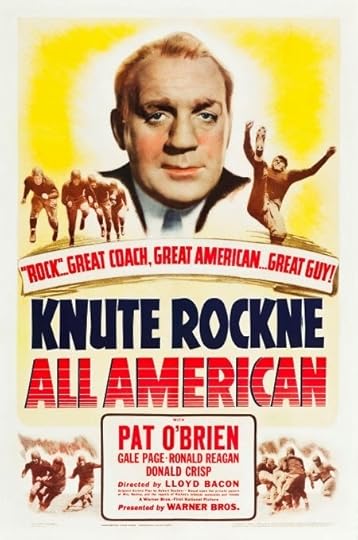
Well, football season is here again. But what with the Ray Rice scandal, bad behavior by other gridiron stars, and the rising anxiety about brain damage among athletes of all ages, football no longer seems like an all-American sport (in the positive sense, at least). How times have changed! My personal memory banks are full of movies in which football is presented as the great American pastime.
If you go back far enough into the annals of Hollywood, you’ll find Knut Rockne, All American. This thoroughly wholesome film was released in 1940, at a time when America had not yet entered World War II. While fighting raged in Europe and Asia, Americans turned inward, clinging to their isolation from the rest of the globe’s problems. Many cheered for this mostly true story of a Norwegian immigrant who grew up to be Notre Dame’s legendary football coach. As played by Pat O’Brien, Rockne was both an innovator and an inspirational figure. The film’s most famous sequence involves a outstanding freshman halfback, George Gipp, who leads the Fighting Irish to victory before succumbing to a fatal infection. As Gipp lays dying in a campus hospital, he urges his teammates to win one in his memory. "Rock,” he says to his coach (who later uses his words to motivate his squad), “sometime when the team is up against it and the breaks are beating the boys, tell them to go out there with all they've got and win just one for the Gipper.'”
Needless to say, George Gipp was played by the young Ronald Reagan. And when Reagan entered political life, “Win one for the Gipper” became his mantra. The film itself won no prizes -- for the Gipper or anyone else -- but in 1997 it was selected for preservation via the National Film Registry, overseen by the Library of Congress, in recognition of its cultural and historic significance.
I haven’t, of course, watched every movie made about football, though there’s warm spot in my heart for 1968’s Paper Lion. In this charming and funny flick, the always appealing Alan Alda plays writer George Plimpton who, for the sake of a Sports Illustrated byline, poses as a rookie quarterback for the Detroit Lions. There’s nothing like seeing (and empathizing with) someone who’s totally out of his league. Believe me, the audience feels every hit, every sack. Ouch!
More recently, two movies have depicted high school football as a laboratory for the solving of social problems. In 2010 The Blind Side won Sandra Bullock an Oscr. Of course she doesn’t put on the helmet and shoulder pads herself. As real-life heroine Leigh Anne Tuohy, Bullock is a genuine steel magnolia, a blonde Southern belle who welcomes into her comfortable life a homeless and troubled black kid with football talent to burn. After the usual trials and tribulations, of course he does her proud, going on to be the first-round draft pick of the Baltimore Ravens.
Equally inspirational is 2000’s Remember the Titans, another true story about high school athletes who make good. In this one, the always stalwart Denzel Washington is an African-American who in 1971 is named coach of a newly integrated Virginia team. Tensions between black and white players naturally mount, but Coach Boone finds ways for everyone to get along. I watched this film to catch the performance of Ryan Hurst, a star actor at Santa Monica High School who plays (very well) a showboating white kid. In a much smaller role, someone named Ryan Gosling is there too. How refreshing it is to see football players as good guys!
Published on October 10, 2014 10:00
October 7, 2014
Bert I. Gordon: A Really B.I.G. Show
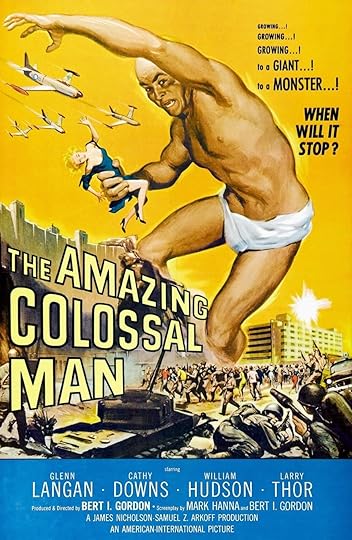
Filmmaker Ron Howard has always admired aging directors who continue to ply their craft. It is his goal to someday emulate the late John Huston on the set of his last film, “out there at eighty-one or eighty-two, wheezing in a wheelchair.” Remarkably, back in 1965 when Ron Howard was eight-year-old Ronny, he was directed by a man who is today still actively making films. The project was Village of the Giants. Its director (who also served as producer, screenwriter, and creator of visual effects) was Bert I. Gordon, also known as Mister B.I.G.
Mister B.I.G. was given his nickname by sci-fi maven Forrest J. Ackerman, in tribute both to Bert’s initials and his fondness for using camera tricks to put on screen various enormously oversized creatures, including giant ducks, giant ants, and The Amazing Colossal Man. In Village of the Giants, Ronny Howard played a boy genius whose invention (a magic growth compound called “Goo”) is stolen by marauding teenagers led by Beau Bridges. Next thing you know, the teens are thirty feet tall. As the ad campaign promises: “SEE THEM BURST OUT OF THEIR CLOTHES AND TERRORIZE A TOWN.”
I was a high school classmate of Bert Gordon’s eldest daughter, Carol. Years later I spoke at length to Susan Gordon, whose stellar career as a child actress began in 1958 when she subbed for an ailing performer on her dad’s Attack of the Puppet People. Sadly, we lost Susan in 2011. But Bert stays busy. His 2010 memoir recounts that when he arrived in SoCal from Wisconsin, he fantasized buying a yacht. Now, his office is a boat docked at Marina del Rey, where he’s writing a second book and working out details for the release of his newly-completed movie, Secrets of a Psychopath. He also spends time tending his website: www.bertigordon.com
Bert admitted to me that many of his lifelong dreams have come true. From the time he got his first movie camera at age 9, he’s been determined to make his way in Hollywood. The fact that his productive years have been spent in the B-movie world, making low-budget horror flicks interspersed with a few sex comedies, has never bothered him. Unlike Roger Corman, whose career paralleled his when both were creating films for American International Pictures, Bert has never given much thought to social message. Yes, in several of his movies, it’s radioactive matter that causes tiny critters to mutate into giants. Still, he doesn’t seem much interested in the political implications of such things as plutonium blasts. Above all, he just wants to tell stories on film.
The challenges he’s most enjoyed over the years have largely been on the technical side. At the Directors Guild’s recent Digital Day, he found a session on the making of Avatar “as fascinating as hell.” But such trendy terms as Motion Capture don’t have much meaning for him, and if he were doing visual effects today he’d rely on a tied-down camera, just as he did in the past, instead of opting for contemporary CGI technology. One modern innovation, though, definitely has the B.I.G. seal of approval: he loves shooting digital, which allows the director to see his footage immediately, instead of waiting for expensive film stock to be processed.
“I’ve always been open to imagining change,” says Bert. Which is why, perhaps, his upcoming movie is a thriller, with no visual effects at all. (It’s privately funded, and he’s in talks to make a second film.) Of the subject matter, he says only, “The horror’s in the mind now.”
Published on October 07, 2014 09:30
October 3, 2014
Home Invasion Blues: The Terror Within

The troubled Iraq War vet, armed with a knife, who hopped a fence and made his way into the White House has given all of us pause. Where’s the Secret Service when you need them? Certainly they’re not acting the way Clint Eastwood does in a 1993 thriller, In the Line of Fire. In that film Eastwood plays a dedicated Secret Service agent with a painful past. Back on November 22, 1963, while on special assignment in the President’s entourage, he’d failed to prevent the assassination of John F. Kennedy. Now another would-be presidential assassin is on the loose. He’s viciously taunting Eastwood, who’ll do anything it takes to protect the current President’s life, even if he has to sacrifice his own. Three guesses as to whether he succeeds.
Hollywood has always thrived on movies in which an unknown assailant intrudes on someone’s domestic happiness. This holds true whether the victim-to-be lives in the White House or in a little white house with a picket fence. Take one classic example wholly suitable for the month of October: John Carpenter’s Halloween. Laurie Strode (played, of course, by Jamie Lee Curtis) is the good-girl babysitter. Michael Myers is the knife-wielding psycho who seems to have a thing for nubile young women. Part of what makes the film scary is the thought that there’s a stranger out there, lurking in the shadows, just waiting to pounce.
But statistics tell us that most attacks inside the home are perpetrated not by strangers but by someone known to the victim. Even the Halloween series, having first established Michael Myers as a mysteriously unmotivated bogeyman running amok, eventually gets around to explaining that Laurie is – unbeknownst to her -- Michael’s younger sister.
In my Roger Corman days, I personally worked on two of the three Slumber Party Massacre movies, in which a pleasant suburban home is invaded by a fiendish Driller-Killer bent on pursuing young girls to their doom. Part of what makes these films memorable for their fans is a nightmarish bad guy who can be seen as a figment of a pubescent co-ed’s fevered imagination. But Slumber Party Massacre III goes the other route, exonerating the weird Peeping Tom and revealing that the true killer is a clean-cut classmate with some serious hidden hang-ups. Then there are Corman’s Sorority House Massacre films, in which slasher figures include the heroine’s psycho brother (Sorority House I) and a creepy next-door neighbor (Sorority House II).
So often in real life the killing is an inside job. I was reminded of this in reading about Daniel Crespo, mayor of the SoCal city of Bell Gardens. He was just shot to death by his wife, in what may or may not have been a response to years of spousal abuse. Then there’s an odd but true story from my very own Santa Monica neighborhood. In a nice corner house, very neat and tidy, lived a middle-aged couple. Good-hearted folks, they agreed to help out a young homeless man by giving him odd jobs around the property. Pretty soon he was occupying a spare bedroom on the premises. At this point the lady of the house, obviously taking seriously the Biblical injunction to love thy neighbor, began a hot and heavy affair with the newcomer. One day an ambulance pulled up in a great hurry: the stranger had suddenly gone berserk, attacking and badly wounding the husband.
I didn’t know those involved, and I don’t know what’s become of them. But the episode would make a great movie, maybe borrowing the title from another Roger Corman film: The Terror Within.
Published on October 03, 2014 11:12
September 30, 2014
Shady Doings at High Noon
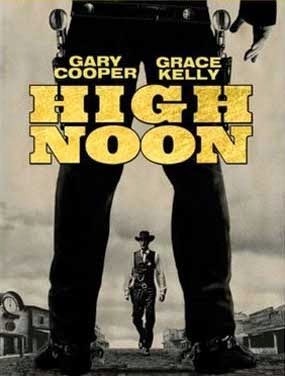
Yesterday, September 29, would have been Stanley Kramer’s 101st birthday. But he died in 2001, at age 87. The following year, there appeared a harsh documentary that undermines Kramer’s standing as the liberal conscience of Hollywood. If Darkness at High Noon is to be believed, the man behind such principled motion pictures as Inherit the Wind, Judgment at Nuremberg, and Guess Who’s Coming to Dinner robbed his friend and associate Carl Foreman of a richly-deserved producing credit. But can we accept the allegations of Lionel Chetwynd’s documentary film at face value?
What role did Foreman actually play in the Oscar-winning 1952 western High Noon? Was he entitled to an on-screen producer credit? There’s no argument that – as a screenwriter and an officer in Stanley Kramer’s production company – Foreman adapted a short story called “The Tin Star” for the screen. And there’s evidence he was deeply involved in on-set supervision of the production in its early weeks. But then he was called to testify before the House Un-American Activities Committee. When asked about his past involvement with the Communist Party, he invoked the Fifth Amendment, taking a moral stand against naming names. Soon thereafter he was relieved of his duties at Stanley Kramer Productions, was paid handsomely for his shares of company stock (to the tune of $280,000), and set sail for England. The finished High Noon bears his writing credit, leading to an Oscar nomination, but it doesn’t name him (or anyone) as producer. Chetwynd’s film labels this a cold-hearted “betrayal by the colleague this man loved most”: Stanley Kramer.
Was Kramer, who is widely acknowledged as High Noon’s producer of record, a credit hog, like so many in Hollywood? Was he a coward who knuckled under to the right-wingers looking for Communists under every bed? Or was the truth far more complicated? Kramer, at this time, had a new deal in place with Harry Cohn’s Columbia Pictures. Columbia was a signatory to the 1947 Waldorf Declaration, which prohibited Hollywood studios from employing former Communists. The press was loudly clamoring for Foreman’s ouster. Foreman had apparently concealed his own years of Party membership from Kramer, who was now reluctant to risk the future of his production company under these difficult circumstances.
Moreover, the legal documents signed by both men on September 13, 1951 reflect Foreman’s hiring as the film’s writer and its associate producer, a second-in-command position. Since Foreman had to be banished from the Columbia lot, he never completed his associate producer duties, so perhaps even this lesser credit was not fully earned.
But on scanty evidence Chetwynd’s documentary makes Foreman a martyr and Kramer a villain. Dramatizing a private confab between the two men with crudely caricatured sketches, it even labels Kramer “the Hitlerian carpet-eater” (whatever that means). Here’s a possibility: Chetwynd himself is known to be an outspoken political conservative. He could well be siding with a long-deceased former Communist as a way to smear the reputation of a famous Hollywood liberal.
Much of Chetwynd’s “proof” stems from a lengthy, mysterious letter apparently written by Foreman in 1952, outlining all the injuries he’d suffered. But Foreman’s credibility is shaky. Witness how High Noon’s esteemed director, Fred Zinnemann, became furious enough to threaten a lawsuit once Foreman began implying to the British press that he alone was responsible for the film’s success. (I’ve seen their correspondence.)
Stanley Kramer, meanwhile, boldly credited two blacklisted screenwriters under their own names for 1958’s The Defiant Ones, thus striking a blow against McCarthyism two years before Kirk Douglas’s much-trumpeted hiring of Dalton Trumbo for Spartacus. Did Kramer wrong Foreman? You decide.
This post is dedicated to Karen Sharpe Kramer, whose faith in her late husband has never wavered. In a real-life version of High Noon, Karen would be playing the Grace Kelly part.
Published on September 30, 2014 11:59
September 26, 2014
Ebola, Medieval-Style: Roger Corman's Masque of the Red Death
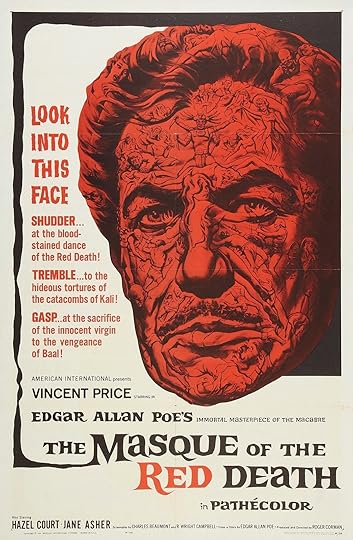
The outbreak of the Ebola virus in West Africa is of course tragic, and I’m glad the world is finally starting to take action. Ironically, I recently found myself giving a talk on Roger Corman’s plague movie, The Masque of the Red Death. To anyone experiencing the horrors of Ebola firsthand, Corman’s highly stylized adaptation of the Edgar Allan Poe short story would doubtless seem insultingly trivial. For the rest of us, though, this 1964 film still packs a wallop.
This was vividly borne out when I spoke at the Weird Weekend, staged by the Historical Society of the Upper Mojave Desert. (Thanks again, guys!) True, the innuendos abounding in the movie’s trailer inspired guffaws and giggles. How else could one respond to the larger-than-life of image of a mustachioed Vincent Price, clad in medieval robes, in hot pursuit of an angelic young maiden? The deep-voiced narrator made sure we got the point: “Lavishly he plants his corrupting seeds of sin, spreading living terror that not even the unsullied can escape.”
But if the audience laughed during the trailer, they quickly quieted down once the movie itself got underway. To many critics then and now, this is Roger’s best-directed film, a serious and rather stunning depiction of good and evil, and of the power of death to level mankind. Upon Masque’s first release, the New York Times critic wrote an uncharacteristically admiring review: “The film is vulgar, naïve, and highly amusing, and it is played with gusto by Mr. Price, Hazel Court, and Jane Asher. As for Mr. Corman, he has let his imagination run riot . . . The result may be loud, but it looks like a real movie. On its level, it is astonishingly good.”
One reason this particular entry in Corman’s Poe cycle seems so handsome is that, thanks to a lucrative deal made by Roger’s AIP bosses, it was shot at England’s historic Elstree Studio. The fact that Elstree’s scene dock was full of splendid sets from classic films like Becket helped stretch AIP’s $200,000 investment. Roger also had the services of a brilliant young British cinematographer, Nicolas Roeg, who would go on to direct such major art films as Don’t Look Now. Roeg’s dramatically lit color images of Prince Prospero’s castle chambers, where carousing nobles are walled off from the spreading contagion outside, luridly transmit the spirit of Poe’s original story. Roger and his screenwriters, Charles Beaumont and R. Wright Campbell, also chose to pay homage to Ingmar Bergman’s The Seventh Seal, with its eerie representation of a hooded Death figure moving quietly among the populace.
In 1989, Corman decided to re-make The Masque of the Red Death for his Concorde-New Horizons Pictures, with an up-and-coming young writer-director named Larry Brand at the helm. As Roger’s story editor, I was surprised that he’d choose to redo perhaps his most famous directorial effort. But Roger Corman is far too pragmatic to be sentimental about his own past achievements. Larry himself later put it to me this way: “Remakes were free, he didn’t have to pay anybody for the rights . . . he had a castle lying around.”
This time Cormanites didn’t need to travel to England, because there was a castle set in place at Roger’s tumbledown Venice, California studio. The new film also differed from the old one in that on-screen female nudity was now expected. Of course it couldn’t be totally gratuitous. In Brand’s script, the court noblemen demand that peasant girls strip for their amusement. It’s a grotesque scene, though a thematically sound one. But more about that some other time.
Published on September 26, 2014 23:18
September 23, 2014
Telling the Truth about Polly Bergen and the Queen of the Nile
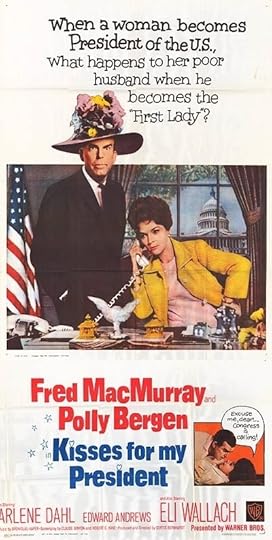
I’ll always associate Polly Bergen with one of my favorite TV game shows from the late 1950s, To Tell the Truth. Bergen was one of four celebrity panelists trying to guess which of three contestants was being truthful about some unusual accomplishment. Other regulars, like Peggy Cass, specialized in goofiness, but Bergen stood out as a savvy cosmopolitan. Always impeccably dressed and coiffed, she seemed smart as well as pretty.
It was not until her recent death at age 84 that I learned about Bergen’s political side. She was a lifelong liberal, dedicated to women’s rights and to the prospect of electing women to high office. In 2008, she was a staunch supporter of Hillary Clinton to top the Democratic presidential ticket. Which makes it highly appropriate that, back in 1964, she herself played the nation’s first female head of state. But I suspect she didn’t exactly consider this a giant leap for womankind. The movie was a treacly confection called Kisses for My President. Far less plot attention was paid to Bergen’s confident, competent President Leslie McCloud than to Fred MacMurray’s fish-out-of-water First Gentleman, whose discomfort with garden teas and a frilly White House boudoir was intended as a source of high comedy. MacMurray, as Thad McCloud, had allowed his wife to run for president because he didn’t think she would win. Just when their marital situation seemed hopeless, Leslie stepped forward to resign her post, for the sake of their unborn baby. This “surprise” pregnancy could have been predicted by any moviegoer over the age of seven. Here’s the film’s final dialogue exchange-- He: “It took 40 million women to get you into the White House . . .” She (lovingly): “And just one man to get me out.”
These days, of course, we’ve got a serious female presidential contender. And, on our television screens, women in high places abound. On Commander-in-Chief (2005-2006), Bergen herself played the mother of a U.S. president played by Geena Davis. Currently, Julia Louis-Dreyfus holds the second highest office in the land on the comedy hit, Veep. The brand-new Madam Secretary features Téa Leoni as Secretary of State. Another newbie is a dramatic series called State of Affairs in which President Alfre Woodard combines the most obvious characteristics of Hillary Clinton and Barack Obama, thus doubly demonstrating that political correctness is alive and well.
All of the above, oddly enough, make me think of a splendid biography I recently read. It’s Cleopatra: A Life, by Stacy Schiff, who like me is an active member of the Biographers International Organization. Schiff notes, at the outset, that the Cleopatra most of us have in our heads “seems the joint creation of Roman propagandists and Hollywood directors.” We think of her, in other words, as an untamed vixen, seducing Roman generals for fun and profit, then (if we’re in a Shakespearean mood) throwing away her kingdom and her life for love.
Schiff’s Cleopatra, though, is a far different creature, less Elizabeth Taylor than Indira Gandhi or (yes) Hillary Clinton. She’s not particularly gorgeous, but she’s indisputably brilliant. With her solid classical education and her ability to speak nine languages, she puts the women of Rome to shame. A master of statecraft and also stagecraft, she uses banquets, parades, and other opulent ceremonies strategically, as a way to advance the cause of her nation. Schiff follows her to the grave, then ends with the death of her son Ptolemy in Rome at the hands of Caligula, “an appropriate end to a dynasty steeped, from the start, in blazing, supersaturated color.”
I can’t wait for the movie.
Published on September 23, 2014 13:28
September 19, 2014
Wild in the United Kingdom: The Scottish Referendum
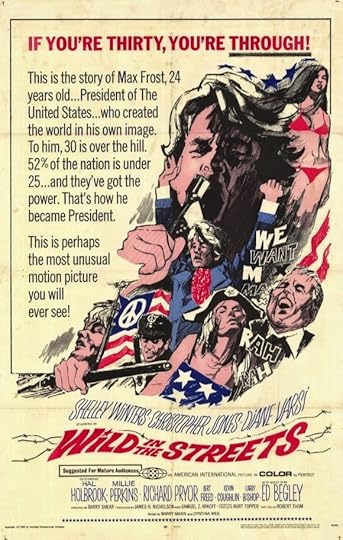
By now votes in Scotland have been tabulated, with Scots choosing not to declare themselves independent of England. This issue was of great emotional concern to British subjects on both sides of the border, as well as to fans of Sean Connery, Ewan McGregor, Kelly Macdonald, and the movie Braveheart. Personally, I don’t have even a wee bit of Scottish blood (and I am absolutely not a scotch-drinker), so my opinion doesn’t count for much. But what’s striking to me is the fact that Scots as young as sixteen were allowed to vote on their political future. (70% of them apparently supported independence.)
Sixteen-year-old voters? I can’t help thinking of an outrageous movie from 1968, Wild in the Streets, in which a twenty-four-year-old rock-n-roll millionaire named Max Frost (played by the late Christopher Jones) is elected President of the United States. How does that happen? I’ll tell you, but consider this a great big Spoiler Alert. In the world of the movie, 52% of the U.S. population is under the age of 25, reflecting the huge Baby Boom generation coming into its own in the late Sixties. Max, wildly championed by this youthful demographic, signs on to help the Senatorial campaign of a hip Kennedy-style candidate, Johnny Fergus (Hal Holbrook). Fergus is advocating that the voting age be lowered from 21 to 18, to match the age at which young men are eligible for the military draft. (This happened for real in 1971.) But during a big campaign rally, Max Frost throws the youth of America into a frenzy by arguing, via a new song called “Fourteen or Fight,” that younger teens too should get the vote.
The upshot is that, once every state but Hawaii has granted fourteen-year-olds the ballot, the federal government as we know it is completely overturned. Under the influence of the L.S.D. that’s been added to the D.C. water supply, Congress rewrites the Constitution, making Max eligible to run for the presidency. Once he’s won, he proceeds to overhaul the social system on his own terms. It seems Max has little use for the older generation, as represented by his addled mother (Shelley Winters). He loudly rejects the ravages of passing time, declaring, “I don’t want to live to be thirty. Thirty’s death, man.”
Under Max’s leadership, all citizens who reach age thirty face mandatory retirement. Anyone with the bad fortune to turn thirty-five is shipped off to “Paradise,” a remotely-located retirement home where regular doses of hallucinogens help keep folks in line. But, as the end of the film shows us, the tide is about to turn. Super-Spoiler Alert: the film’s last line belongs to a child who’s vowing, “We’re gonna put everybody over ten out of business.”
The darkly comic screenplay for Wild in the Streets was written by Robert Thom, based on his 1966 Esquire story, “The Way it All Happened, Baby.” The producers were the American International Pictures team of Samuel Z. Arkoff and Jim Nicholson, who had a talent for bringing to America’s theatres and drive-ins the concerns of young America. Though AIP backed many of Roger Corman’s greatest hits, Roger had nothing to do with this film. (When trying to deal with similar themes in 1970’s Gas-s-s-s-s!, Corman ran afoul of Arkoff and Nicholson’s increasingly conservative sensibilities, and they never worked together again.)
But I well remember Robert Thom’s contribution to the opening pages of Roger’s Death Race 2000. He was sardonic, bitter, and brilliant. Somehow it seemed apt that we discussed his work over lunch: for him a Rob Roy and a bloody plate of steak tartare.
Published on September 19, 2014 14:55
September 16, 2014
The Doctor and the Movie Star
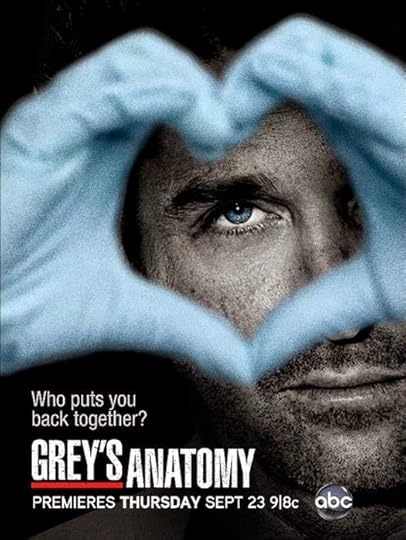
The death of Joan Rivers following what was billed as a routine procedure in her doctor’s office has reminded me of the connection between showbiz and the medical profession. Rivers, who was famously keen on plastic surgery, certainly knew her way around an operating suite. How ironic that a medical slip-up may have done her in. I suspect that somewhere in heaven she’s making dark but very funny malpractice jokes at her own expense.
Meanwhile, following a serious injury to an elderly member of my own family, I’ve been spending quality time in one of SoCal’s spiffiest hospitals. St. John’s in Santa Monica boasts wall panels that pay tribute to such Golden Age of Hollywood donors as Irene Dunne and Jimmy Stewart, who with wife Gloria has endowed a lovely rose garden. Right across the street from St. John’s is the John Wayne Cancer Institute. West Hollywood’s Cedars-Sinai megacomplex has named streets to honor such charitable luminaries as George Burns and Gracie Allen. At UCLA, meanwhile, there’s the recently-renamed David Geffen School of Medicine, acknowledging the generosity of the record industry mogul. It’s a long Hollywood tradition to support medical facilities with big industry bucks.
How ironic, though, that this week’s Hollywood Reporter -- a memorial issue with Joan Rivers on the cover -- is also devoted to a run-down of Hollywood’s Top Doctors in various specialty areas. In some cases, the listings are augmented by endearing little vignettes, like the one about the internal medicine specialist so busy catering to the in-crowd that he sometimes finds himself flying on patients’ private planes and giving flu shots in the middle of crowded restaurants. This doc charges an annual concierge fee (the latest gimmick in medical billing) in order to be available 24/7 for services ranging from surgeries to diet planning to veterinary care of a celeb’s beloved pooch. Says he, “these are really busy people who have better things to do than go to the doctor.” Methinks that’s true for all of us, but who am I to quibble?
Some of the connections between Hollywood and the medical profession don’t seem quite so self-serving. The Reporter features a few fascinating sidebars: one about a specialist who saves the voices of rock stars; one (titled “I Am the Real McDreamy”) by a USC chief of neurosurgery who actively consults with the staff of Grey’s Anatomy to ensure authenticity; several highlighting the work of researchers and Hollywood folk who’ve banded together to find cures for an array of rare “orphan diseases.” There are also some lively statistics outlining “How Working and Living in Hollywood is Good – and Bad – for Your Health.” I’m glad to know that L.A. residents have lower rates of heart disease, lung cancer, and (who would have thought?) auto accident fatalities than elsewhere. The syphilis stats? Don’t ask. But isn’t it good to know there are 257% more shrinks per capita in L.A. than in the rest of the country?
Flipping past the ads for “aesthetic dermatology” and the “best allergist in all of Los Angeles,” I was intrigued to find a page devoted to a comparison of various SoCal emergency rooms. Handy icons indicated those with short waits, top trauma centers, and distinguished pediatric units. But you could also learn which hospitals are the most “celebrity-friendly.” Says the head of the emergency room at Cedars-Sinai, “We treat a number of celebrities and VIPs and are cognizant of protecting people’s privacy.” Not a bad thing, I guess, when you’re treating Suge Knight for gunshot wounds following an MTV Awards after-party that got out of hand.
Published on September 16, 2014 20:04
Beverly in Movieland
I write twice weekly, covering topics relating to movies, moviemaking, and growing up Hollywood-adjacent. I believe that movies can change lives, and I'm always happy to hear from readers who'd like t
I write twice weekly, covering topics relating to movies, moviemaking, and growing up Hollywood-adjacent. I believe that movies can change lives, and I'm always happy to hear from readers who'd like to discuss that point.
...more
- Beverly Gray's profile
- 10 followers



